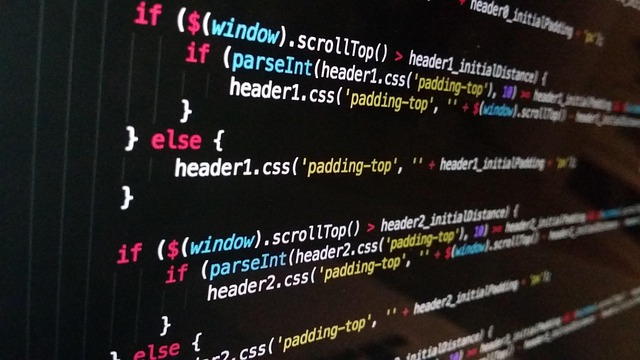The explosion of social media over the past decade has reshaped how people communicate, share experiences, and consume information. Platforms that once focused on simple photo sharing now operate complex ecosystems that collect, analyze, and monetize personal data at an unprecedented scale. In this environment, the responsibilities of a data protection officer (DPO) have evolved from routine compliance checks to proactive guardianship of privacy rights across a dynamic digital landscape. As users become more aware of privacy risks, the role of the DPO is critical in building trust, ensuring lawful processing, and mitigating reputational damage for organizations that rely on social media channels.
How Social Media Gathers and Uses Data
Modern social networks deploy a variety of tracking mechanisms—cookies, device identifiers, location tags, and behavioral analytics—to create detailed user profiles. These profiles feed recommendation engines, targeted advertising, and algorithmic curation. The data flow is often opaque: users consent to terms of service that bundle countless permissions into a single agreement, while the platform’s internal data governance documents remain inaccessible to the average user.
- Data types collected: demographic information, content interaction logs, third‑party data integrations, biometric signals, and real‑time geolocation.
- Processing purposes: personalization, advertising revenue, content moderation, and platform optimization.
- Data sharing: with advertisers, analytics partners, and occasionally law enforcement under specific legal frameworks.
Because these systems operate in near real time, a data protection officer must monitor not only how data is collected but also how it is transformed, stored, and transmitted across borders.
The Evolving Role of the Data Protection Officer
A traditional DPO primarily ensured compliance with static regulations such as the General Data Protection Regulation (GDPR) or the California Consumer Privacy Act (CCPA). Today, the same professional must also navigate algorithmic transparency, data minimization in high‑velocity environments, and emerging AI‑driven insights. Key responsibilities now include:
- Risk assessment: Continuously evaluate privacy risks introduced by new features or third‑party integrations.
- Policy development: Draft and update privacy notices, consent mechanisms, and data handling procedures that reflect platform‑specific practices.
- Incident response: Coordinate investigations of data breaches or misuse, ensuring timely notifications to regulators and affected users.
- Stakeholder liaison: Act as the bridge between technical teams, legal counsel, marketing departments, and external auditors.
In effect, the DPO is the guardian of privacy ethics within the social media ecosystem, balancing commercial objectives with the rights of users.
Key Challenges Faced by DPOs in the Social Media Landscape
Operating within a rapidly evolving environment presents several hurdles. Understanding these challenges helps organizations anticipate gaps and deploy corrective measures.
“The biggest obstacle is the sheer volume of data flowing through a social media platform. It’s not enough to have a policy; you need real‑time monitoring to enforce it.” – A leading privacy advocate
- Algorithmic opacity: Proprietary recommendation engines hide decision logic, complicating explainability requirements.
- Cross‑border data flows: Transferring user data between jurisdictions triggers complex legal obligations and necessitates robust safeguards.
- Consent fatigue: Users often accept broad terms without reading details, reducing the effectiveness of opt‑in/opt‑out mechanisms.
- Third‑party risk: Vendor relationships can introduce indirect exposure to personal data, requiring diligent due diligence.
Best Practices for DPOs Managing Social Media Data
To mitigate these challenges, a data protection officer can implement a combination of technical, procedural, and cultural initiatives:
- Data minimization by default: Configure platform settings to capture only the data necessary for core functions.
- Transparent consent workflows: Provide granular, context‑specific consent choices, and offer easy revocation options.
- Regular privacy audits: Schedule quarterly assessments of data processing activities, especially after feature launches.
- Privacy‑by‑design collaboration: Embed privacy experts in product development cycles from concept through deployment.
- User education: Publish clear, jargon‑free explanations of data practices and the implications for privacy.
By institutionalizing these practices, organizations can demonstrate a proactive stance that resonates with regulators and users alike.
Regulatory Landscape and Its Impact on Social Media Operations
Regulators worldwide are intensifying scrutiny over how social media platforms handle personal data. While GDPR and CCPA provide foundational principles—lawfulness, transparency, data minimization, and user rights—many jurisdictions are adopting new mandates. Recent developments include:
- Digital Services Act (EU): Requires platform operators to assess and mitigate systemic risks, including privacy harms.
- California Privacy Rights Act (CPRA): Expands consumer rights and imposes stricter data usage limits.
- China’s Personal Information Protection Law (PIPL): Imposes comprehensive data localization and consent requirements.
For a data protection officer, staying ahead of these evolving rules means continuously mapping platform processes to new compliance checkpoints and anticipating potential enforcement actions.
Future Outlook: Data Protection Officers in an AI‑Driven Social Media World
Artificial intelligence will further entangle privacy concerns. Predictive modeling, deep learning‑based content moderation, and automated ad targeting rely on large, often sensitive datasets. The role of the DPO will become increasingly technical, requiring knowledge of model governance, bias mitigation, and privacy‑enhancing technologies such as differential privacy and federated learning.
“AI can amplify both efficiency and risk. A data protection officer must become an AI ethics advisor as well as a compliance officer.” – Chief Privacy Officer, a leading tech firm
Simultaneously, the rise of decentralised social platforms may redistribute data ownership, shifting some responsibilities away from corporate entities. Nevertheless, the foundational principles of privacy protection—respect, accountability, and transparency—remain constant, and the data protection officer will continue to be the steward of those values.



